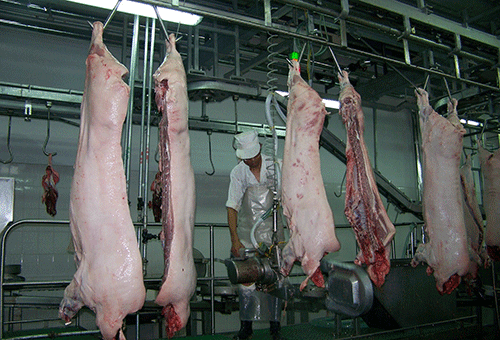The shortage of pork on the local market due to a ban of imports from South Africa owing to the outbreak of foot-and-mouth disease has pushed up prices for meat processors and consumers.
According to the Meat Board of Namibia, the situation has resulted in the country importing pork from the European Union (EU), primarily Germany, despite the higher producer price in Germany.
“The additional cost of sourcing pork overseas for the local market has over the past couple of months, been passed down to consumers and has consequently made pork pricier on the domestic market,” reads the monthly statistics commentary.
A total of 4 230 pigs were slaughtered at Meat Board registered abattoirs while 168 pigs were exported to Angola during May 2023.
The pork ceiling price under the Pork Market Share Promotion Scheme (PMSPS) remains at N$51.03/kg.
Furthermore, in the livestock and meat industry analysis for the first quarter of 2023, local pork production catered for 31.5% of the domestic consumption requirements and the remaining 68.5% was serviced by imports (inclusive of offal and processed products).
Pork imports, primarily from Germany (52.8%), Spain (24.5%), South Africa (9.2%) and EU (13.4%) increased by 4.9% during the first quarter of 2023.
The Meat Board added that a total of 2 223 415kg of pork was imported during the first three months of 2023 compared to 2 120 551kg imported during the same period in 2022.
The significant increase in pork imports from the EU market was necessitated by the FMD outbreak in South Africa that necessitated a shift as an alternative.
The Meat Board whose mandate is to promote the interest of Namibia’s meat industry domestically and elsewhere, stated that for the month of May 2023, the livestock and meat industry recorded mixed results.
Year-on-year, the sheep, goat and pig sectors posted positive results while the cattle sector fell into a dip during the month of May 2023.
“The sector is expected to see increased availability of animals marketed during the coming months due to drought induced-supply. This will inadvertently exert downward pressure on auction prices across the board,” explained the meat marketing promoter. –mndjavera@nepc.com.na


